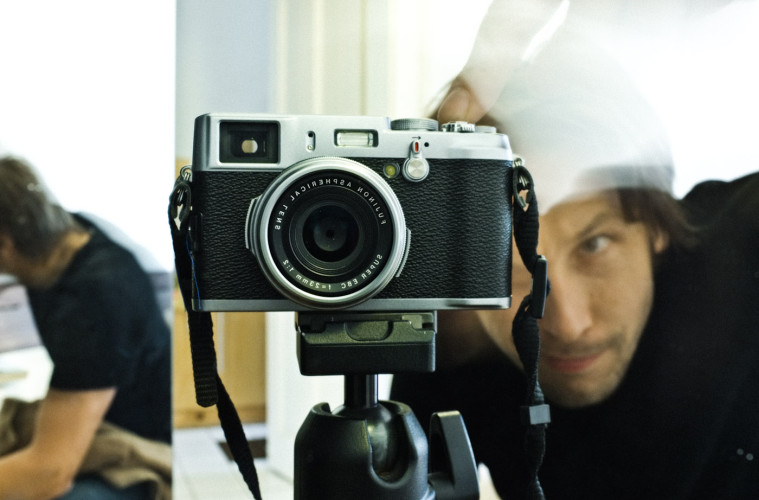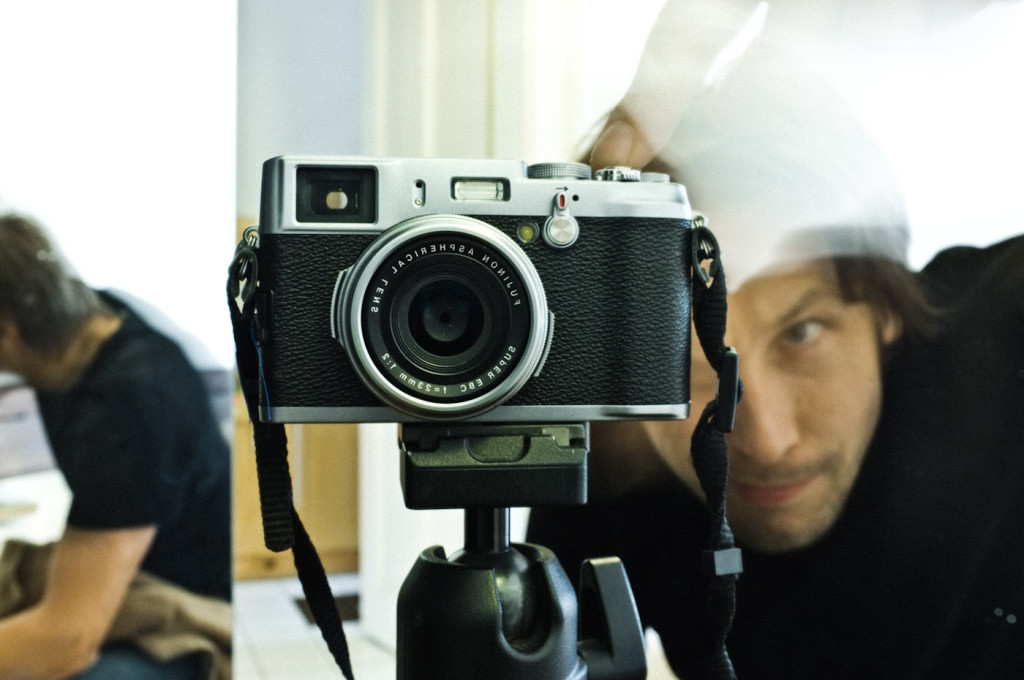
Selfportrait of the Fuji X100, 10 / 2011
Well – when I am dreaming about a digital compact camera, I’m thinking about the following attributes and features:
High quality fixed wide angel lens with a brilliant bokeh and a lively characteristic; I don’t want a copying machine with sharpness right into each corner; …high performing sensor with a rather natural characteristic; no pimped up saturation, color or contrast with the standard settings; …dedicated aperture ring, shutter speed dial and exposure compensation dial; …fast autofocus with the option to adjust the focus manually; I know I want a lot; …manual focus ring on the lens; …no boring disturbing features…
These’re my dreams. I know – not really the mainstream requirements.
While looking for appropriate cameras I came across some with the x-chromosomes: the Leica X1 and the Fuji Finepix X100, and of course the Leica M9, but… …guess what… …surprise: no competition – in price or quality.
To make it short: The Fuji X100 did the race and I really like it. But the X100 doesn’t fulfill all the mentioned criteria above. For sure it’s not a high end camera in the price segment of the Leica M series.
The X100 is a mechanically solid camera with a really nice image characteristic and a fine bokeh. I would say the Fuji has a classic rendering. I was surprised about the APS-C sensor performing very well in dark situation. I perceived the contrast and the saturation as a bit too high with the standard settings. The controls of the aperture, the shutter speed and the exposure compensation fits my expectations of handling cameras in an old fashioned way. The most important dials are in the right places. The rangefinder of the X100 isn’t an useless accessory like for ninety percent of the compact cameras. It has a bright field. These were mainly the pros of the Fuji x100. Though there is a but…
Unfortunately the autofocus is slow and sometimes misses its mark. In my eyes this is the most serious disadvantage of the X100. Furthermore: The manual focus is a bit cumbersome. The lens is visible in the rangefinder. Some of the useful features, respectively the ND filter, are hidden – deep in the menu structure. These are the negative aspects I recognized during the testing period of two weeks.
The text in hand is only a brief outline of the whole – for further insight have an eye on this review by Steve Huff.
Finally: Yes! This thing will be my daily companion.
Here are some pictures i took with the X100. Note: I don’t provide classical test exposures for comparisons. If you want to see such pictures or benchmarks, watch out for comprehensive technical reviews, such as this one.
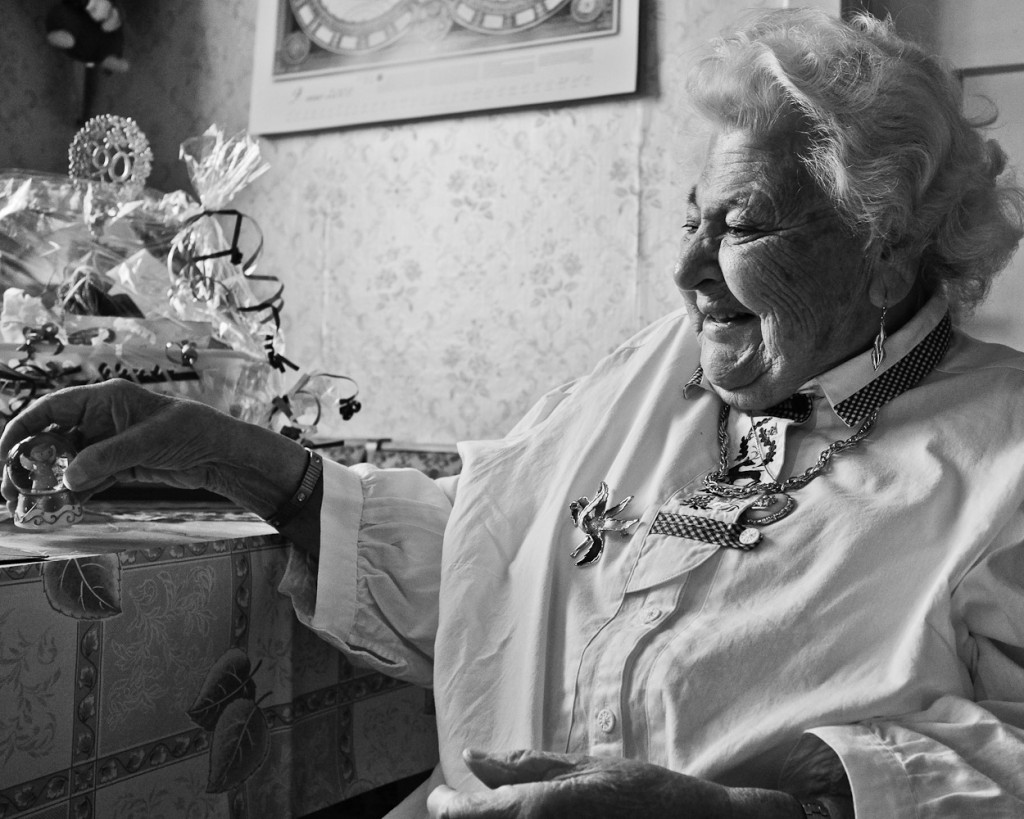
Fuji Finepix X100, f4.5, 1/250 s, ISO 800, applied my individual B/W conversion in Lightroom; no further manipulations

Fuji Finepix X100, f4.0, 1/200 s, ISO 800; applied my individual B/W conversion in Lightroom; no further manipulations
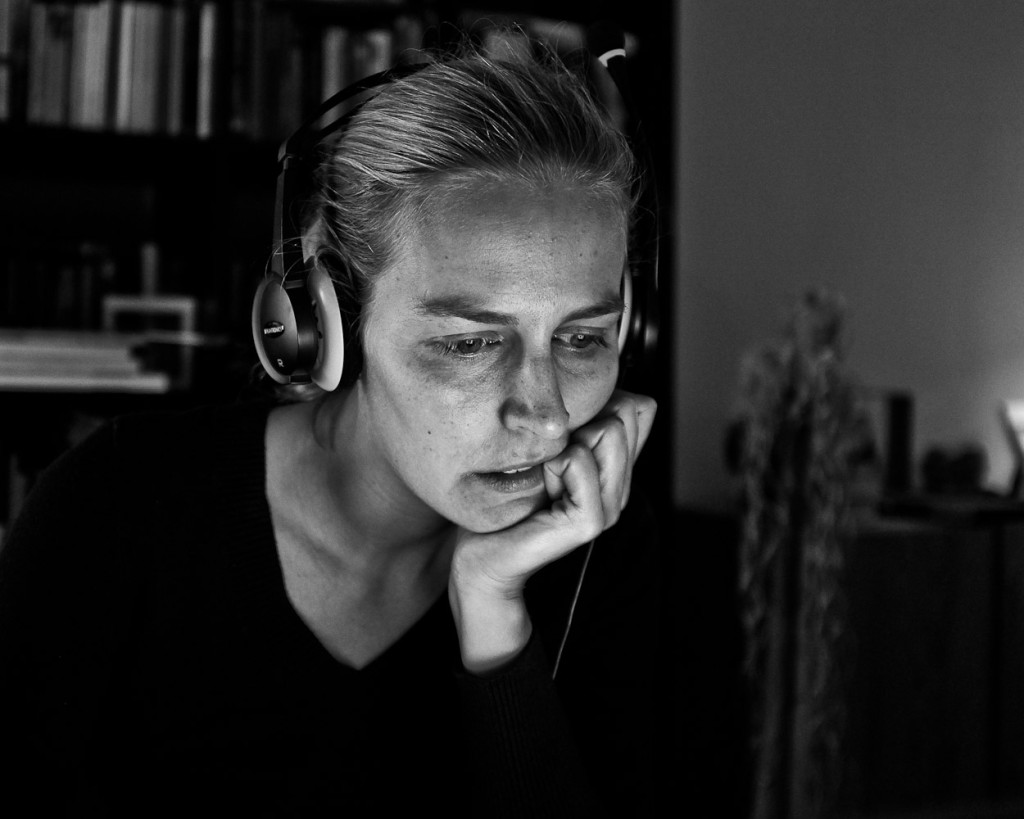
Fuji Finepix X100, f2.0, 1/30s, ISO 1600; Situation: The light comes mainly from an LCD laptopscreen; without flashes or additional set lights; applied my individual B/W conversion in Lightroom; no further manipulations
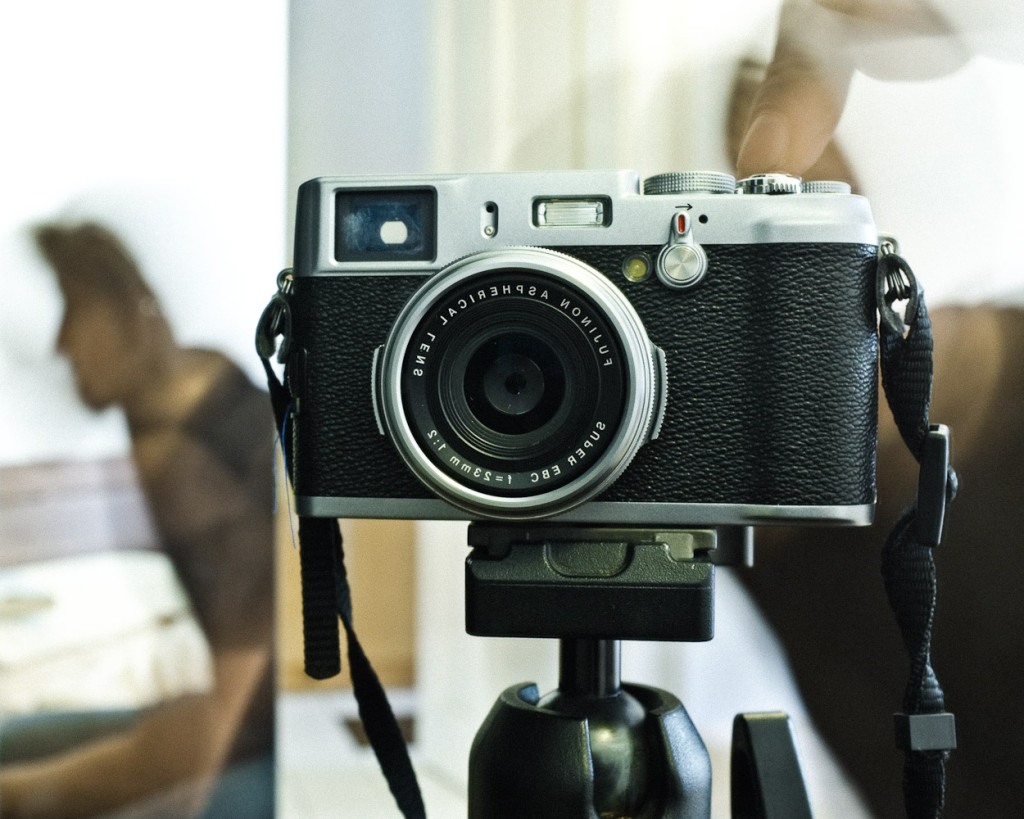
Fuji Finepix X100, f5.6, 1/6 s, ISO 400; individual color conversion in Lightroom applied;
Dear Leica fetishists. Sorry for bursting your bubble. I really like Leica. The Leica R8 is the best analogue camera I had ever worked with and it’s my all time favorite. But in case of the X1: I prefer the X1 mainly in one aspect to the Fuji X100: The image quality and the rendering. Great, but in the end far to less for making the race.
Some experts write about the chance of a possible Leica X2 to top the Fuji X100. I’m really sceptical whether Leica could launch a significantly improved X1 without cannibalizing the far more expensive M camera segment. We will see.
Now I’m looking forward to the launch of Fuji’s system camera. There are rumors.


